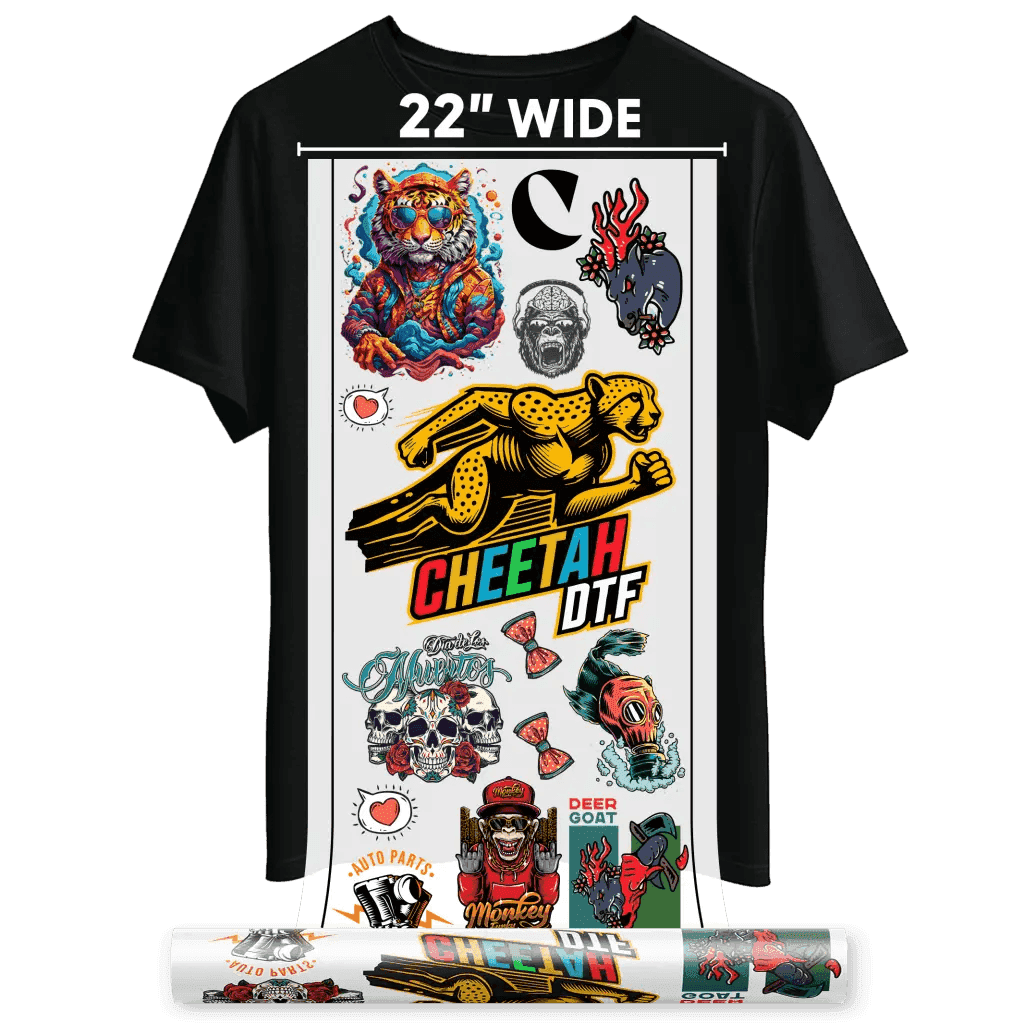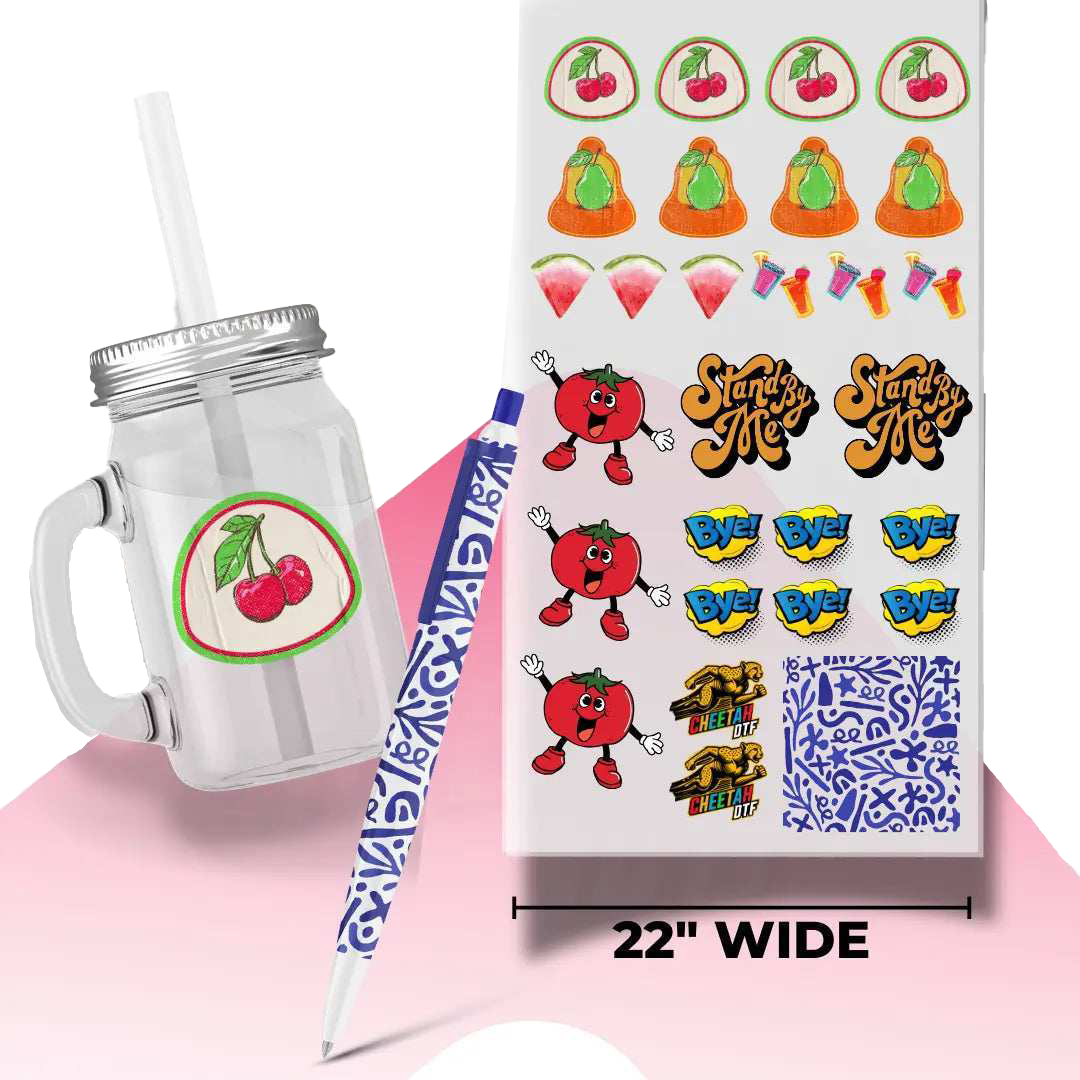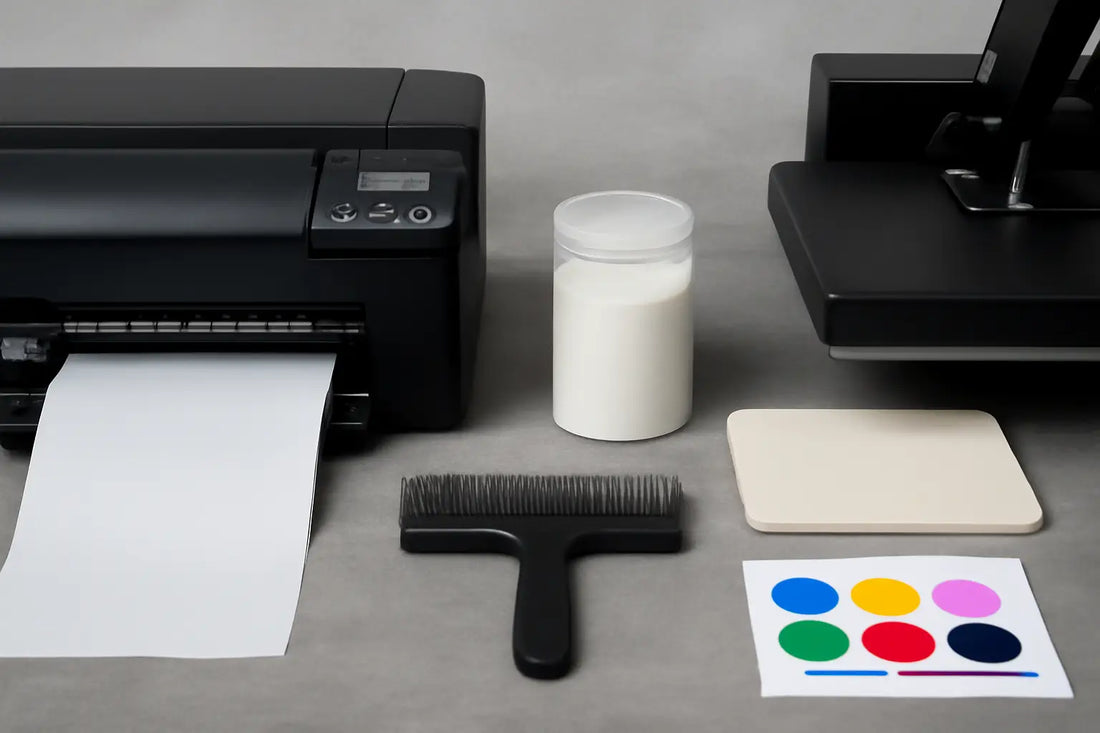DTF Printing Glossary: 10 Technical Terms For Pros
Understanding the fundamental ideas of the DTF printing method is more than a formality; it's a competitive advantage whether you're boosting output or improving your workflow. The DTF Printing glossary is a good starting point. Therefore, in this post, we’ll uncover ten technical terms, ranging from advanced print features to vital DTF printing supplies and finishing processes, to help you avoid costly errors, produce consistent quality, and work like a professional. This will be your go-to reference (with advanced DTF printing terms explained) for confidently navigating every stage of the DTF process. So let’s dive right in!
1. RIP Software
By transforming your artistic files into high-resolution, printing-ready data, Raster Image Processor (RIP) software gets them ready for printing. Managing white under base layers, color density, and ink flow is especially vital in the DTF printing process. Mastering RIP settings ensures accurate results and optimal ink usage. Understanding your RIP program is non-negotiable if you are serious about workflow speed and quality control.
2. White Under base
Printed before the CMYK hues, the white under base is a basic layer of white ink. One of the most important DTF printing methods, it ensures that colors appear vibrant on both light and dark clothing. Your design will seem faint if your under base is not aligned or transparent enough. A poorly managed under base leads to flat prints; therefore, mastering this concept is absolutely essential for professionals seeking uniformity across orders. Include this in your DTF printing pro-level cheat sheet.
3. Loading and Film Tension
PET film is among high-quality DTF printing materials; proper loading is absolutely necessary. Smudging, banding, or skewed images result from the wrong tension during loading. Professionals check film feed pressure, loading alignment, and the anti-static environment. Though DTF printing for beginners instructions usually ignore it, this word is essential in complex processes. Pay careful attention to how your film is treated if you desire clear, edge-to-edge graphics consistently throughout your workflow.
4. Applying Hot Melt Powder
The adhesive that fastens your design to the fabric is DTF powder adhesive, sometimes referred to as hot melt powder. Even, consistent coverage is very important; too much causes staining or a heavy feel; too little results in bad adhesion. Understanding powder mesh size, cure temperatures, and humidity effects is crucial. In short, this is among the most crucial DTF printing tips that separates professionals from amateurs; it’s not just a “sprinkle” step in the DTF printing process.
5. Temperature and Healing Period
Science and accuracy collide in the curing of the powder adhesive and the ink layer. For optimal temperature and time, you must calibrate your heat tunnel, oven, or curing station. Although this varies depending on the substance and ink type, typical parameters are approximately 160–170°C for 2–3 minutes. Poor curing causes peeled post-wash or cracked transfers. Having dependable curing methods ensures that your DTF prints survive under pressure when working in bulk.
6. Profiling of Colors
For novices, professional DTF printing quickly becomes a color management issue as you gain more clients and design styles. Without adequate profiling, skin tones may turn orange, and blues may change toward purple. A software-calibrated preset controls how colors appear once printed. Here comes the color calibration tools and RIP program. Think of this as one of the DTF printing techniques for producing brand-ready, visually uniform products.
7. Timing of Heat Press and Platen Pressure
Applying the transfer appropriately requires knowledge of how pressure and time affect adhesion. Pros know that modest changes in press pad condition or garment thickness can significantly impact the result. Use medium to firm pressure and adhere to material-specific pressing times, usually 15–20 seconds at 150–160°C. This method ensures full powder fusion without overheating the cloth, maintaining a flawless DTF printing process.
8. Printhead Alignment
If you're serious about printing, keep your printhead aligned! If it's off, your prints will appear blurry or the colors will be distorted. This affects DTF printing quality directly. Beginners don't need to worry about this too much, but if you're trying to get the best quality prints, you'll need to do it. Everyone in the DTF printing business knows this stuff because it makes a big difference in how your prints look.
9. Test Your Prints!
Before printing in bulk, test it on various materials. See if it stretches well, washes well, and if the color stays put. If you don't, you might end up with a batch of poor-quality prints and irate customers. Seriously, do a test print first—it could save you a lot of trouble, especially if you're using new DTF printing materials. It’s one of the smartest DTF printing tips that pros swear by.
10. Static Electricity
This might sound unusual, but static can significantly impact your film and powder when you're printing. It can pull extra powder where it shouldn't be or mess up the ink. Shops that print a lot use humidifiers or anti-static brushes to address this issue. If it's dry or you're using synthetic fabrics, this is something you should know. It can seriously disrupt your DTF printing process, so save yourself the mess.
Why Go With Cheetah DTF?
Cheetah DTF prints are fast, accurate, and make prints that look amazing. They're great whether you're just starting out or you're trying to grow your business. Plus, they're easy to use and don’t require a ton of upkeep! With great support and tools, Cheetah helps you get great prints with less hassle. Choose Cheetah for smoother DTF printing techniques and consistent quality. Additionally, Cheetah offers tons of resources, including a DTF printing glossary.
Final Thoughts
Knowing your DTF printing terms helps you get good prints without wasting time or money. This isn't just for learning; it's for improving and generating a profit. Save this information and refer to it when needed. Understanding these DTF printing tips can make all the difference, especially if you're trying to grow or maintain a successful DTF printing business.
Ready to get started? Start with our DTF Sample Pack to test the quality of our prints before your first bulk order.


